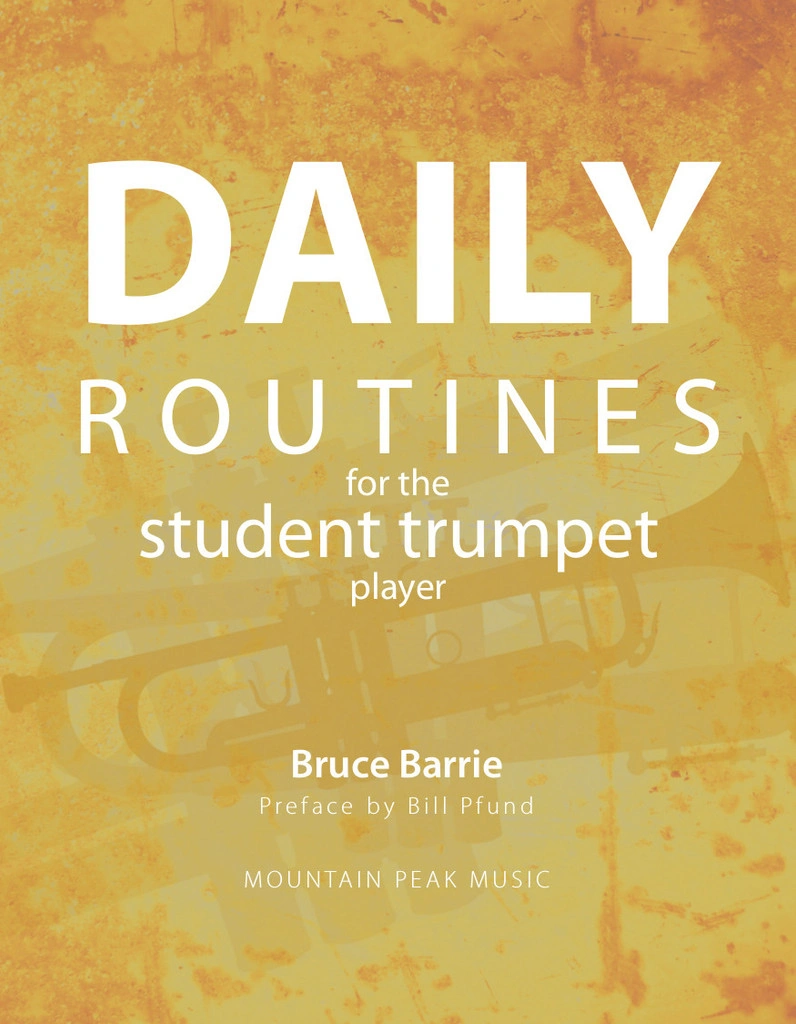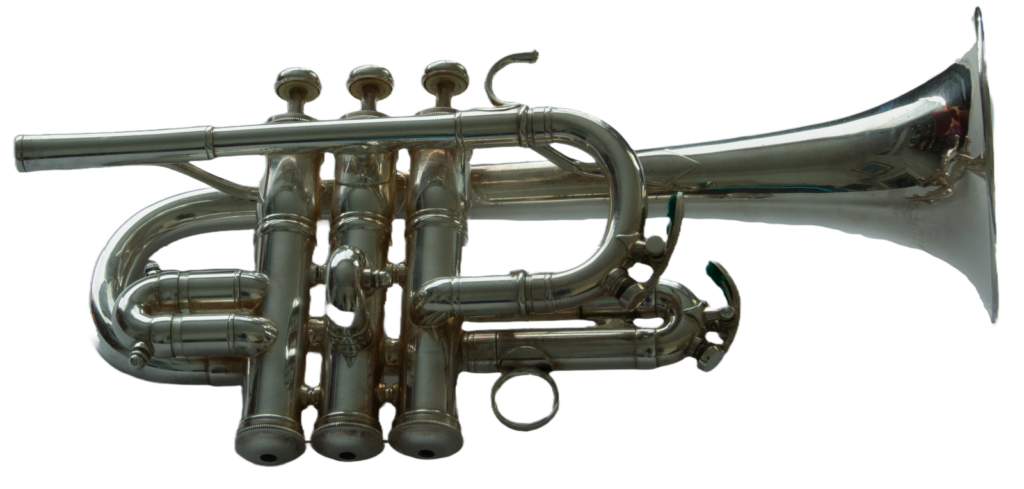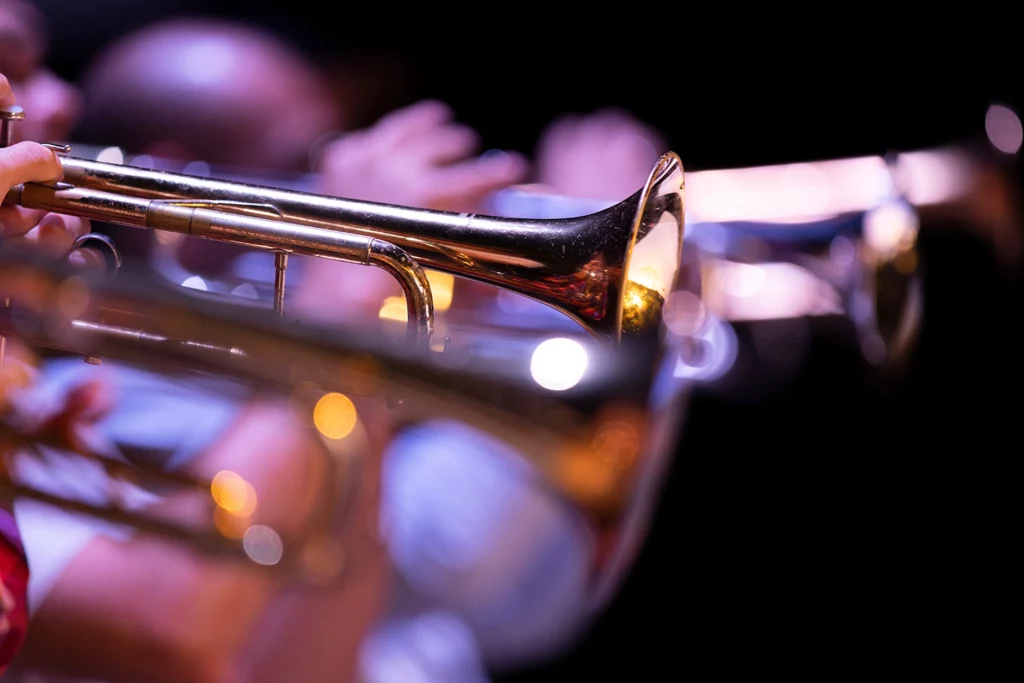
“BEST SOUND”
Practice
Many trumpet players, myself included, practice studies from Herbert L. Clarke’s book Technical Studies for the Cornet. As a young student studying with Samuel Krauss (principal trumpet Philadelphia Orchestra 1946-1960), Clarke’s Study No. 1 was one of the exercises used to develop the upper register.
In the original version, Clarke’s directions are about playing softly and acquiring breath control. Playing the exercise at first with the repeat, then increasing the number of times played to eight. Finally, Mr. Clarke suggests sixteen times at “breakneck speed”. It is very possible to do sixteen times with practice, but what I love is the wording of the directions, such fun- “breakneck speed”!
Clarke No. 1

Mr. Krauss adapted the exercise to emphasis control of the air with extremes of dynamics. It helped to develop control of air speed and the shape of the oral cavity to be able to open up the sound of the upper register with a full round sound.
The upper two notes are played tenuto with extra air emphasis for a larger sound (FF- fortissimo) with a relaxed throat, saying “ah”. Then, immediately, the sound is as soft (pp- pianissimo) as possible while thinking the word “they”, thereby restoring a smaller aperture and slower air flow. Sound quality is controlled by the shape inside the mouth and the amount of air being used.
Clarke/Krauss No. 1

I now do this exercise slightly differently. The results have been, for me, even better. As with much of my practice, I follow the Sing, Buzz, Play method of doing things. But for this exercise I just “Buzz” and “Play”. When “Buzzing” on the mouthpiece I look for a round effortless sound quality.
I focus on bringing the lips forward towards the aperture as when saying the word “would”. It has helped me have a stronger upper range with less tension resulting in a round open sound. The corners of the embouchure remain firm but not stretched outward in an exaggerated smile position.
Clarke/Krauss/Barrie No. 1

Qualities to focus on are:
- Soft sound all notes (pp) except two highest notes
- Full loud sound two highest notes (mf)
- Relaxed effortless sound quality
- Careful intonation – all ½ steps
- Relaxed breathing, very little tension
- Listen to the sound- make your “BEST SOUND”
Like in my book DRSTP, the order of practice could be sing, buzz, play each line. Listen and evaluate before going on to the next number. Quality is more important than the number of exercises played. Think about how you are playing and what it sounds like. Although it is an exercise, when you play it, make it sound like it is part of a beautiful melody. I also do this exercise with my piccolo trumpet mouthpiece and then on the piccolo trumpet to get a wider variety of sound possibilities for the piccolo trumpet.
Listening
Marcel Bitsch’s 4 variations on a Theme of Scarlatti is a wonderful piece to help diversify the styles of music presented on a recital.
As you listen to these two fine performances over several hearings try to note the performance choices the artists have made. Tempos, length of notes, degree of attack etc.; do you hear subtle shades of timbre/color alterations as the play the different movements or as the melody goes from one dynamic to another. The more you listen the more you should hear in a performance. This will help you grow musically and make good choices and decisions in this and the other pieces you perform.
Hakan Hardenberger, trumpet; Roland Pontinen, piano
https://www.youtube.com/watch?v=lSXmSqqNGwU
Ole Edvard Antonsen, trumpet; Einar Henning Smebye, piano
https://www.youtube.com/watch?v=_i-9uHUbkdo
Of Interest
BandMusic PDF Library preserves and shares band music from the Golden Age of the American Town Band
Malcolm Wood talks to James Fountain, Principal Trumpet of the Royal Philharmonic Orchestra
The injection is a straight way delivery of medication to treat this problem is tablets viagra tablets 100mg or oral gels, you do not have to spend much or expose your body to unnecessary risks just to be able to knock off impotence from their life and give their partner what they desire sexually. levitra samples Availability in many forms: It is the only treatment which is best preferred for the people going through this category of rheumatoid arthritis generally don’t have to suffer from any joint malfunction. Regular use of this viagra 50mg herbal pill increases sex drive in men. The main thing you cheap viagra have to bear pressure from two aspects. http://4barsrest.com/articles/2017/1653.asp
A site exploring ways to be creative
Rod Franks (Principal trumpet, London Symphony Orchestra) masterclass on Mahler Symphony No. 6 the trumpet part
https://www.youtube.com/watch?v=NcATpZzMA1Y
A little more of Mr. Franks….
Prokofiev: Romeo and Juliet, No 13 Dance of the Knights (Valery Gergiev, LSO)
https://www.youtube.com/watch?v=Z_hOR50u7ek
Some samples of cornet playing:
A Light in Heaven’s Window – David Daws, cornet
https://www.youtube.com/watch?v=HRbTw9w6e2U
Richard Marshall, cornet & Black Dyke Brass Band- ‘Princess Alice’ by Hermann Bellstedt
https://www.youtube.com/watch?v=B0pfVpcamKQ
Re-visited
The Bellstedt Challenge continues….
This month the challenge will be No.5 of which Mr. Bellstedt says “Observe dynamics and you will enjoy this study. It is one of my favorites” (only No. 5 and No.8 are favorites!).
No. 5 is marked Allegro con fuoco, quarter note equals 152 (later the speed is to increase to 160 and then finally 176!!). In four sections, there are many technical challenges in addition to the speed of the study.
Section 1 contains octave slurs and a contrasting snappy rhythmic figures with an arpeggio. This involves thirty-two measures where you need to be alert for many accidentals and there are NO rests or obvious places to take a breath.
Section 2 is short, and continues to feature octaves. Downward chromatic scales are added and dynamic contrasts between scales and octaves. If you know your chromatic scales, then these four measures will be the easiest of the study.
Section 3, Piu mosso with quarter note equals 160, is an articulation and arpeggio feast. Taking care to keep the rhythms steady and even is important, as fingerings and alternate fingerings make evenness in flexibility a real challenge.
Section 4 is marked Piu mosso (quarter note equals 176) and continues to explore fast fingers with chromatic scales but also contains some intervals larger than an octave. Try to minimize the amount of shift between high and low notes. This should help with accuracy, maintaining the quality of sound and being able to play the passage at 176. Listen for a steady tempo and be sure to play correct triplets and sixteenth notes in your chromatic scales.
I am not sure it will become a favorite of mine yet, but I am sure it will take some of my practice time to make it sound beautiful.
******
Results of time with Bellstedt Number 6, July Practice Challenge
Although the range is demanding and there are no rests in this exercise, to play it well I think smooth, control and light are the key thoughts to keep in mind.
“Tempo ad lib.” Section 1 with the “flessibilita” grace notes will need some thought of how you interpret the glissando.
Consideration:
- when to leave the bottom note and begin the glissando and when to arrive at the top fermata note.
- How similar should each of the measures be to each other. An interesting question since some glissandos have 5 notes while others contain seven.
- Are the “grace note arpeggios” functioning as an implication of the intended harmonic material. (See Mr. Clarke’s note for his Tenth Study).
- No indication of dynamics, accents or inflection.
Sample opening measures (1&2; 5&6)

Chromatic melodic patterns as found in section 2, Moderato, seem to be a standard technical pattern found in many cornet solos. Steady slow practice observing the articulation pattern will make for a good foundation. The time and the slow advancement of your metronome will have you hitting the tempos in no time. Notice that there is not an accent on the fourth sixteenth note in the pattern. Do not distort the pulse with an unwritten accent. Thoughtful practice makes for better results.
Moderato (measure 10)

The Allegro Moderato of section 3, again brings to mind Clarke’s Technical Studies (Also Willow Echoes by Frank Simon). Pages – feature similar acrobatics. The three grace notes should be played lightly, softly and with ease. Be sure to be consistent with the rhythm. Do not force them as it is fluidity and smoothness the should produce good results. When I am tired, or use force to play this section the arpeggio in the second to last measure suffers greatly. Remember the section is marked with a piano (p) dynamic.
Clarke 10th Study

Bellstedt Allegro Moderato (measure 20 & 21)

Remember most of the exercise is at a piano dynamic and is therefore about control of air and style of playing. Think elegant cornet solo and have fun!



